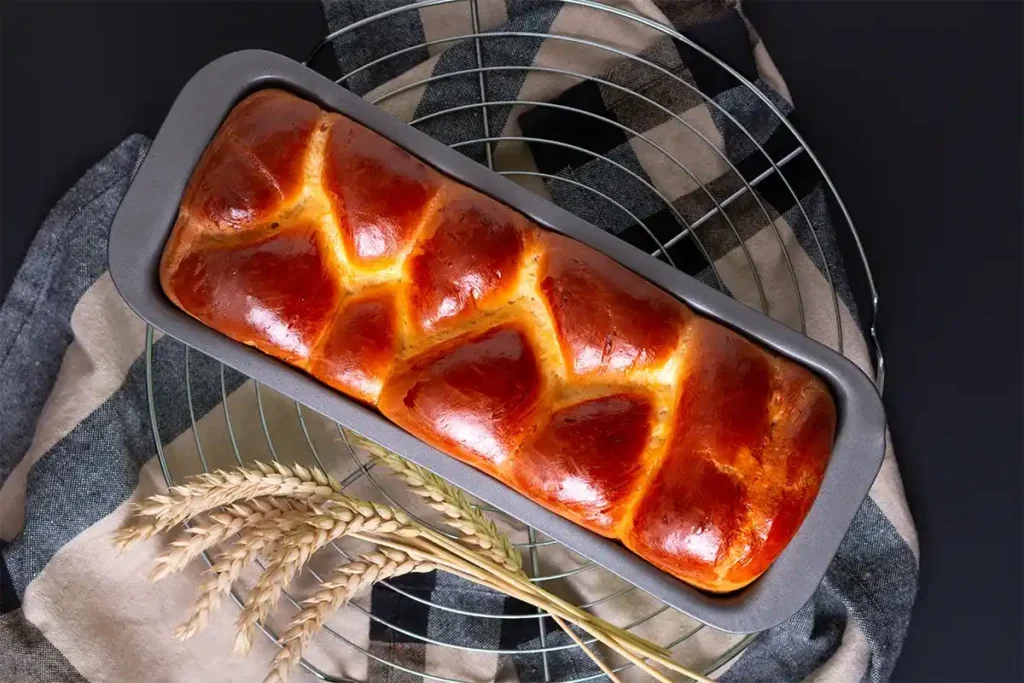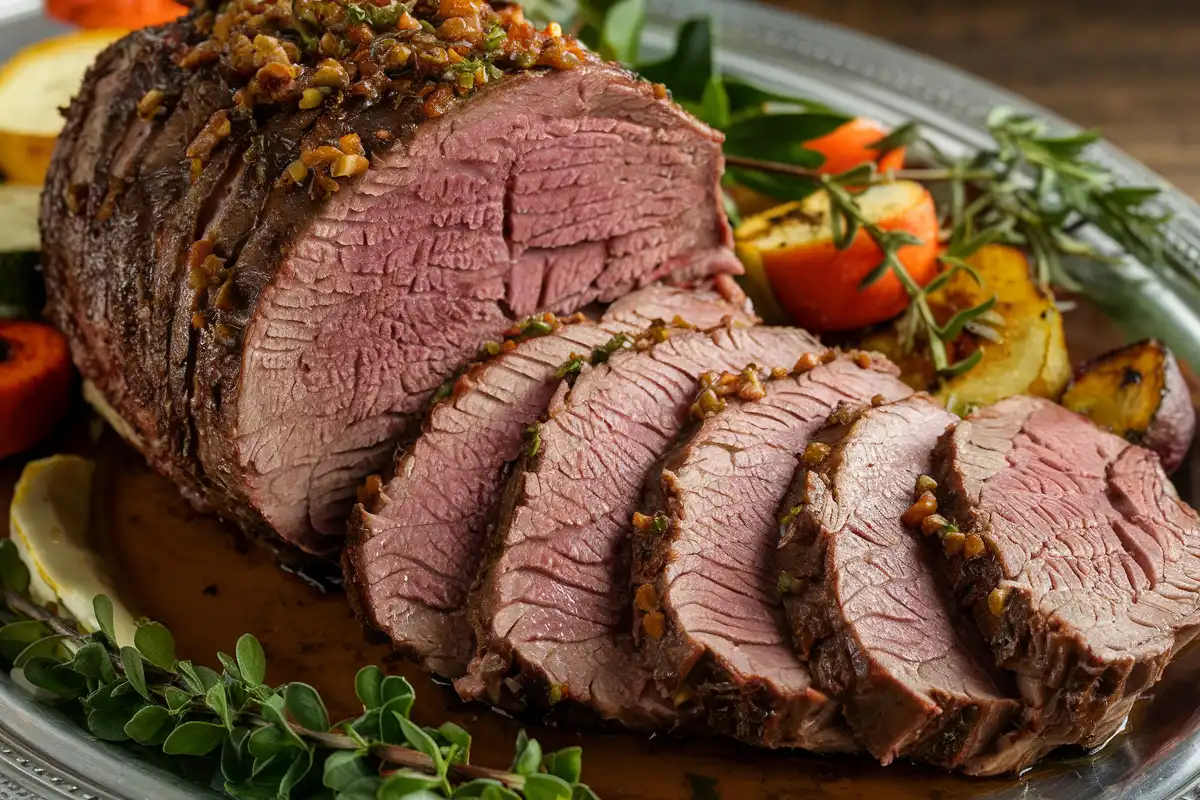Roasting venison is one of the most rewarding ways to prepare this delicious, lean meat. Whether you’re a seasoned chef or new to cooking venison, the Venison Roast Recipe you’ll discover here will guide you step-by-step to achieve a perfectly cooked roast every time. This article dives into everything you need to know—from choosing the right cut and preparing the roast to cooking techniques and pairing ideas. By the end, you’ll be ready to serve a succulent venison roast that will wow your guests or family.
Introduction to Venison Roast
Venison has been a prized meat for centuries. Known for its rich flavor and lean texture, it’s a great alternative to traditional beef or pork roasts. However, cooking venison can sometimes be intimidating for those who aren’t familiar with it. In this section, we’ll explore what venison is, its benefits, and why it makes such a great roast.
What is Venison and Why It Makes a Great Roast
Venison refers to meat from deer, elk, or other game animals. It’s known for being lean, with lower fat content than many domestic meats. This lean quality means that venison can easily dry out if overcooked, but when done right, it’s incredibly flavorful.
A Venison Roast Recipe allows you to unlock the full potential of this game meat. Roasting venison helps to maintain its moisture while bringing out its natural flavors. Plus, it pairs well with a variety of seasonings and cooking methods, making it a versatile option for any meal.
The Nutritional Benefits of Venison Roast
Venison is not only tasty but also packed with nutrients. It’s a great source of protein, vitamins, and minerals while being low in fat. Venison is also rich in iron and zinc, which are essential for overall health. For anyone looking for a healthier alternative to traditional red meats, venison provides a lean, nutrient-dense option that doesn’t compromise on flavor.
Choosing the Right Cut of Venison for a Roast
Selecting the right cut of venison is crucial for a perfect Venison Roast Recipe. Different cuts offer different textures and flavors, so it’s important to pick one that suits your roasting method and desired outcome. In this section, we’ll explore the best cuts for roasting and how to choose the ideal one for your meal.
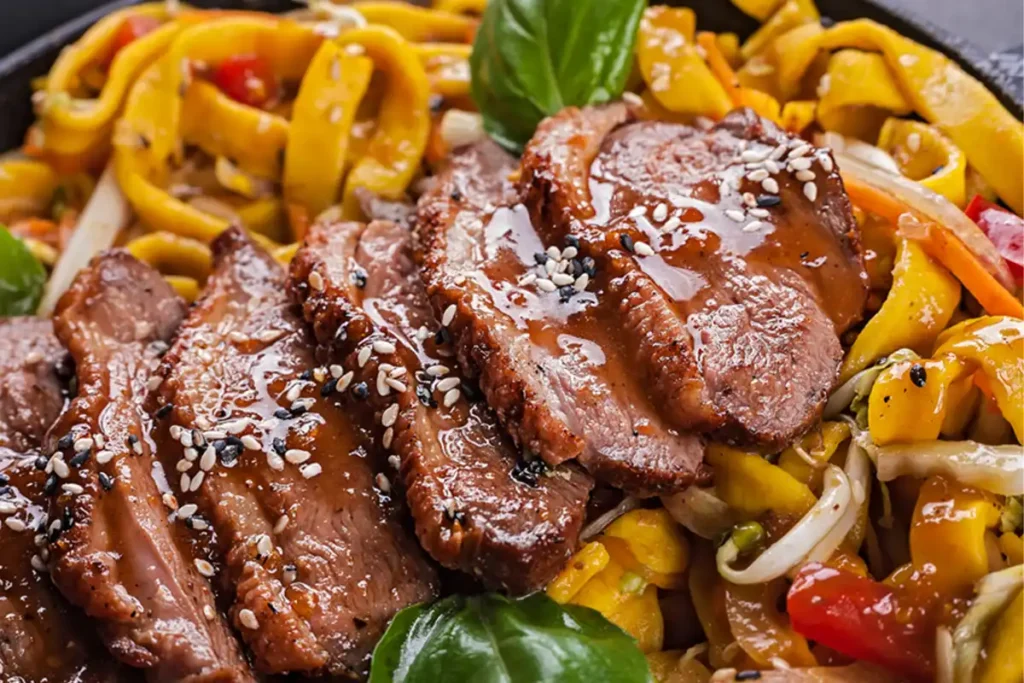
Popular Venison Cuts for Roasting
When it comes to venison, the most popular cuts for roasting include the venison loin, shoulder, and leg. The venison loin is the most tender cut, known for its mild flavor and fine texture. It’s perfect for those who prefer a more delicate roast. On the other hand, the venison shoulder and leg are tougher cuts, but they become wonderfully tender when slow-roasted or braised.
If you’re looking for something that can stand up to rich seasonings and long roasting times, the venison shoulder roast is an excellent choice. It’s packed with flavor and, when cooked low and slow, becomes melt-in-your-mouth tender. The leg roast offers a more robust flavor and can also be cooked slowly for a tender result.
How to Select the Best Venison for Your Roast
When shopping for venison, look for meat that’s deep red and free of excess fat. Venison is a naturally lean meat, so if you notice large amounts of fat, it may not be the best quality. Fresh venison is always preferable, but frozen cuts can work just as well if properly thawed. If possible, try to buy venison from a trusted local butcher or hunter to ensure the quality of the meat.
The Venison Roast Recipe you choose should also take into account the size of your roast. A smaller roast (about 3-4 pounds) is ideal for a family meal, while a larger roast (5 pounds or more) may be better suited for gatherings or holiday feasts.
Now that you’ve picked the perfect cut, it’s time to prepare the venison for roasting. Let’s move on to Part 3, where we’ll dive into the preparation process, including marinating and seasoning techniques to ensure your roast turns out deliciously tender and full of flavor.
Preparing the Venison Roast
Proper preparation is key to achieving the best flavor and texture in your Venison Roast Recipe. Whether you prefer to marinate the meat overnight or simply season it with a dry rub, the steps you take before cooking will have a huge impact on the final result. In this section, we’ll walk you through the essential preparation techniques.
Marinating Venison: Tips and Best Practices
Marinating venison is one of the best ways to infuse flavor and tenderize the meat. Since venison is lean, marinating helps prevent it from drying out during cooking. For a basic marinade, combine olive oil, red wine or vinegar, garlic, herbs like rosemary and thyme, and a bit of salt and pepper. The acidity from the wine or vinegar helps break down the muscle fibers, making the meat more tender.
If you’re short on time, you can marinate venison for as little as 2-4 hours. However, for the best results, let it marinate overnight in the refrigerator. Don’t forget to turn the meat occasionally to ensure an even distribution of the marinade.
Dry Rubs vs. Marinades: Which is Best for Venison Roast?
While marinades are great for adding moisture and flavor, a dry rub can be a fantastic option if you’re looking for a more intense crust and flavor. A dry rub is essentially a mixture of spices and herbs rubbed onto the surface of the meat before cooking. Some popular spices for venison dry rubs include garlic powder, onion powder, smoked paprika, ground black pepper, and brown sugar.
For a Venison Roast Recipe that’s bursting with flavor, consider using both. Marinate the meat first to lock in moisture and tenderness, then apply a dry rub for a flavorful, crispy exterior. This method offers the best of both worlds.
How to Season Your Venison Roast for Maximum Flavor
No matter which preparation method you choose, proper seasoning is crucial. A simple blend of salt, pepper, garlic powder, and rosemary can work wonders. For a richer flavor, try adding some mustard or Worcestershire sauce to your marinade or rub. You can also experiment with spices like juniper berries or coriander to complement the natural flavors of the venison.
Once seasoned, allow the venison to sit at room temperature for about 30 minutes before cooking. This ensures even cooking and helps the roast maintain its juiciness. By taking the time to prepare the venison properly, you’ll guarantee a roast that’s flavorful, tender, and juicy.
Cooking Techniques for Venison Roast
Cooking a venison roast can be a bit different from roasting beef or pork due to its lean nature. The key is to cook it slowly and gently to preserve its moisture and tenderness. In this section, we’ll explore three popular methods for preparing the perfect Venison Roast Recipe: oven roasting, grilling, and slow cooking.
How to Roast Venison in the Oven
Oven roasting is one of the most common ways to prepare venison. It’s simple and produces a consistently delicious roast. To begin, preheat your oven to 350°F (175°C). Place your seasoned venison roast on a roasting rack inside a roasting pan to allow air to circulate it. This helps the roast cook evenly.
Roast the venison for about 20-25 minutes per pound, depending on the size and desired doneness. For medium-rare, aim for an internal temperature of 130°F (54°C). Use a meat thermometer to check the temperature, as this will ensure the roast doesn’t overcook. Once it reaches the desired temperature, remove the roast from the oven and let it rest for at least 10 minutes before slicing.
Grilling Venison Roast: A Step-by-Step Guide
Grilling venison is another fantastic way to prepare it, especially if you enjoy smoky flavors and a crispy exterior. For this method, you’ll want to use indirect heat to prevent the venison from becoming too dry. Start by heating your grill to medium-high heat. Sear the roast on all sides for about 2-3 minutes per side to create a flavorful crust.
After searing, reduce the heat and move the venison roast to a cooler part of the grill. Close the lid and cook for 15-20 minutes per pound. Again, use a meat thermometer to ensure the roast reaches the ideal internal temperature. Let the venison rest before carving to retain its juices.
Slow Cooking Venison Roast: The Low-and-Slow Method
Slow cooking is an excellent option for tougher cuts of venison, like the shoulder or leg. By cooking the meat at a low temperature for an extended period, you’ll get a tender, melt-in-your-mouth roast. To slow cook your venison, place the roast in a slow cooker with your favorite marinade or broth. Cook it on low for 6-8 hours or until the meat is fork-tender.
This method allows the flavors to develop slowly, and the venison becomes incredibly tender. Slow cooking also helps retain moisture, making it a great choice for lean cuts that can otherwise dry out quickly.
In the next part, we’ll discuss how to determine the ideal cooking times and internal temperatures for venison roast to ensure you get the perfect result every time.
Venison Roast Cooking Times and Temperature
One of the most important factors in making a Venison Roast Recipe is knowing the right cooking times and temperatures. Since venison is leaner than beef, it cooks faster, and overcooking it can lead to a dry and tough roast. To get the perfect venison roast, you’ll need to pay close attention to both the time and temperature.
Ideal Internal Temperature for Venison Roast
For a juicy and tender venison roast, it’s essential to cook the meat to the right internal temperature. The USDA recommends the following temperatures for venison:
- Rare: 120-125°F (49-52°C)
- Medium-rare: 130-135°F (54-57°C)
- Medium: 140-145°F (60-63°C)
- Well done: 150°F (66°C) or higher
The most popular doneness for venison is medium-rare, as it keeps the meat tender and moist. Use a meat thermometer to check the temperature in the thickest part of the roast, away from the bone, to ensure accuracy.
How to Check the Doneness of Venison Roast
If you don’t have a meat thermometer, you can check the doneness by pressing the roast with your fingers. A rare roast will feel soft, while medium-rare will be slightly firmer. For medium, the roast will feel firm but still give a little when pressed.
Once your roast has reached the desired temperature, remove it from the oven or grill and allow it to rest. Resting is crucial because it lets the juices redistribute, making the meat even more flavorful and tender. Let your venison roast rest for at least 10 minutes before carving.
With the right temperature and cooking time, your Venison Roast Recipe will turn out perfectly tender and full of flavor. In the next part, we’ll look at some delicious sides and sauces that pair beautifully with venison.
Pairing Sides with Venison Roast
A Venison Roast Recipe shines even brighter when paired with the right sides. The rich, gamey flavor of venison calls for complementary dishes that enhance its taste while balancing its intensity. In this section, we’ll explore some delicious side dishes and sauces that pair perfectly with venison roast.
Vegetables That Complement Venison Roast
Venison has a deep, earthy flavor, so pairing it with vegetables that have similar robust tastes works wonders. Roasted root vegetables like carrots, parsnips, and sweet potatoes are a great choice. These veggies caramelize in the oven, adding a subtle sweetness that contrasts beautifully with the richness of the venison.
Other excellent vegetable sides include brussels sprouts, green beans, and mushrooms. A sautéed mushroom medley, perhaps with some garlic and fresh thyme, can bring out the savory undertones of the venison roast. Additionally, roasted winter squash or butternut squash makes a perfect match, offering a smooth texture and delicate sweetness.
Best Sauces and Gravies to Serve with Venison Roast
When it comes to sauces, venison benefits from richer, more flavorful options. A classic red wine reduction sauce is an excellent choice, as the acidity of the wine cuts through the gamey flavors and enhances the richness of the meat. You can also try a berry sauce, such as one made from blackberries or cranberries, which adds a slightly sweet and tangy note that complements the venison perfectly.
For a more savory option, a mushroom gravy or onion gravy made from the pan drippings will add depth and moisture. These sauces not only elevate the flavor but also keep the venison roast moist, ensuring each bite is tender and flavorful.
These side dishes and sauces help balance the gamey flavors of venison and make your Venison Roast Recipe truly special. In the next part, we’ll cover how to store and reheat any leftovers, so you can enjoy your roast even after the meal is over.
Storing and Reheating Leftovers
If you’re lucky enough to have leftover venison roast, proper storage and reheating are crucial to maintaining its quality. While venison is best enjoyed fresh, you can easily store leftovers and enjoy them for days to come. In this section, we’ll share the best practices for storing and reheating your Venison Roast Recipe leftovers.
How to Properly Store Leftover Venison Roast
To store leftover venison, first allow the roast to cool to room temperature. Once cooled, wrap it tightly in plastic wrap or aluminum foil, or place it in an airtight container. Store the roast in the refrigerator for up to 3-4 days. If you want to keep it for longer, you can freeze the roast for up to 3 months. Just make sure it’s wrapped securely to prevent freezer burn.
Best Ways to Reheat Venison Roast Without Drying It Out
To reheat venison without losing its moisture, consider using gentle methods like the oven or stovetop. Preheat your oven to 300°F (150°C) and wrap the roast in foil to keep it from drying out. Reheat for 10-15 minutes, or until warmed through. Alternatively, you can reheat individual slices in a skillet over low heat, adding a splash of broth or wine to keep the meat moist.
By storing and reheating your leftover venison roast carefully, you can enjoy its rich flavors even after the initial meal.
Frequently Asked Questions About Venison Roast
A Venison Roast Recipe can raise some questions, especially if you’re new to cooking venison. In this section, we’ll answer some of the most common questions to help you prepare a perfect venison roast every time.
How Do I Keep My Venison Roast From Drying Out?
Since venison is a lean meat, it can dry out if not cooked properly. The key is to avoid overcooking it. To prevent this, use lower heat and slow-cook the meat, especially for tougher cuts like the shoulder or leg. Always check the internal temperature with a meat thermometer and remove the roast as soon as it reaches your desired doneness. Another trick is to marinate the meat before roasting to lock in moisture. For added protection, you can wrap the roast in foil to keep the juices in.
Can I Use Venison for Slow Cooker Recipes?
Yes! Venison is perfect for slow cooking, as this method helps break down tougher cuts and infuse the meat with flavor. If you’re using a slow cooker for your Venison Roast Recipe, try adding vegetables, broth, or wine to the cooker to keep the roast moist and flavorful. Slow cooking is ideal for venison roasts made from tougher cuts like the shoulder or shank.
How Can I Tell If My Venison Roast is Cooked to Perfection?
The best way to tell if your venison roast is cooked to perfection is by using a meat thermometer. For a medium-rare roast, the internal temperature should be around 130°F (54°C). For medium, it should be 140°F (60°C). If you don’t have a thermometer, you can press the roast with your fingers: rare feels soft, medium-rare is firm with some give, and medium is firm with less give. After removing it from the heat, let the venison rest for about 10 minutes to let the juices redistribute.
Can I Cook Frozen Venison Roast?
It’s always best to thaw venison before cooking, as it ensures even cooking. However, if you’re in a pinch, you can cook a frozen venison roast, but keep in mind that it will take about 1.5 times longer than a thawed roast. If you choose this route, ensure that the roast reaches the desired internal temperature for safety and tenderness.
These answers should help clear up any confusion about preparing your Venison Roast Recipe. If you’re still uncertain about something, don’t hesitate to reach out for more advice or check out related recipes.
For more delicious recipes, check out the wide selection of treats on yumtastyrecipes.com.
Conclusion
A Venison Roast Recipe offers a unique and flavorful alternative to traditional meat roasts, bringing a rich, hearty dish to your table. Whether you’re preparing it for a special occasion or just a family dinner, knowing how to choose the right cut, prepare the meat, and cook it to perfection makes all the difference.
By following the guidelines in this article, from selecting the right cut to cooking with the right techniques, you can confidently prepare a delicious venison roast. Don’t forget to experiment with side dishes and sauces that complement the gamey flavor of venison. And remember, proper storage and reheating ensure you can enjoy your venison leftovers as much as the original roast.
Now that you’ve got all the tips you need, it’s time to roll up your sleeves and create your very own delicious Venison Roast Recipe! Happy cooking!
This unadulterated Venison Roast Recipe such a gem, and if you have attempted it, it would be highly appreciated if you could drop a comment with stars to let me know how it turned out for you! It gives me joy to hear from you – it encourages me to come up with more and more recipes for you guys😊 Ready, steady, cook! – Emily
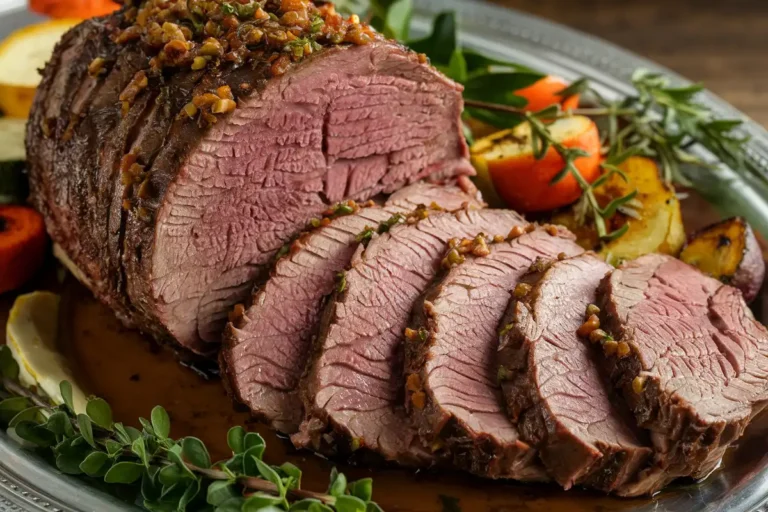
The Ultimate Venison Roast Recipe: Tender, Flavorful, and Perfect Every Time
This Venison Roast Recipe combines tender, flavorful venison with savory herbs and spices for a perfectly cooked roast. Ideal for any special occasion or hearty dinner.
- Total Time: 2 hours
- Yield: 6 servings 1x
Ingredients
- 3–4 lb venison roast
- 2 tbsp olive oil
- 4 garlic cloves, minced
- 2 tbsp fresh rosemary, chopped
- 2 tbsp fresh thyme, chopped
- 1 tsp salt
- 1 tsp black pepper
- 1 cup beef broth
- 1/2 cup red wine (optional)
Instructions
- Preheat your oven to 350°F (175°C).
- Rub the venison roast with olive oil, garlic, rosemary, thyme, salt, and pepper.
- Sear the roast in a hot skillet for 3-4 minutes on each side.
- Place the roast in a roasting pan. Pour the broth and wine around the roast.
- Roast for 1.5 to 2 hours or until the internal temperature reaches your desired doneness.
- Rest for 10 minutes before slicing and serving.
Notes
- For medium-rare, aim for an internal temperature of 130°F (54°C).
- Leftovers can be stored for up to 3-4 days in the refrigerator.
- Prep Time: 15 minutes
- Cook Time: 1.5-2 hours
- Category: Dinner
Nutrition
- Serving Size: 1 slice (approx. 6 oz)
- Calories: 320
- Sodium: 140mg
- Fat: 14g
- Saturated Fat: 5g
- Unsaturated Fat: 9g
- Protein: 48g
- Cholesterol: 90mg
Keywords: venison roast, venison cooking, roasted venison, game meat roast, venison roast cooking tip
You’ll also like
- Banana Bread Recipe with 2 Bananas
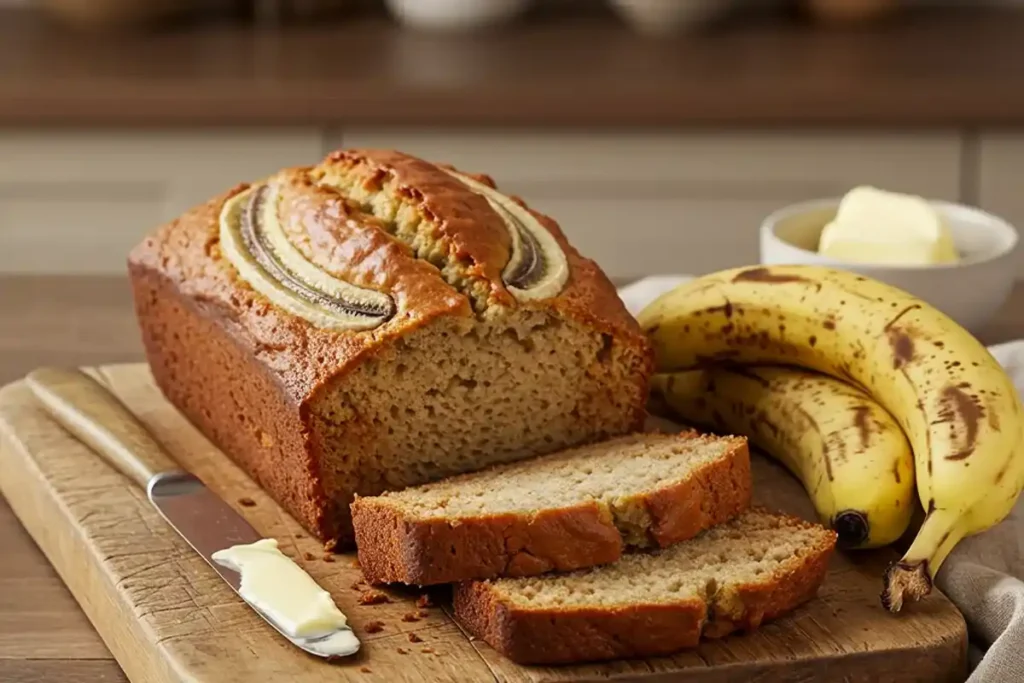
- Delicious Churro Cheesecake Bars Recipe – Easy Dessert Delight!
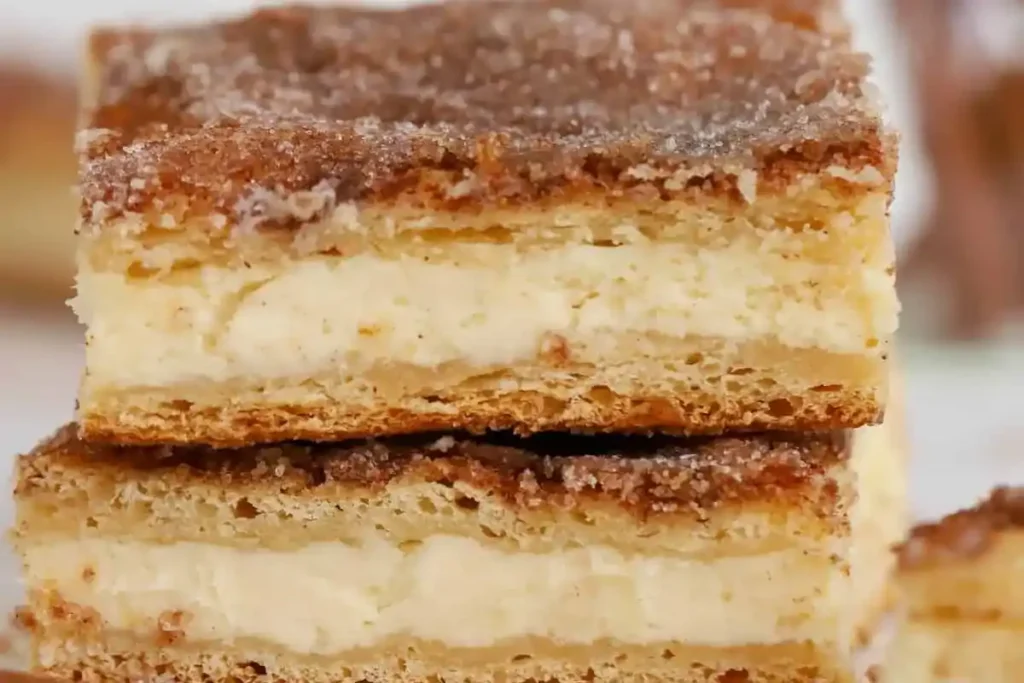
- Sure Jell Recipes: How to Make Perfect Jams & Jellies

- Delicious Steelhead Trout Recipe: A Flavorful Guide
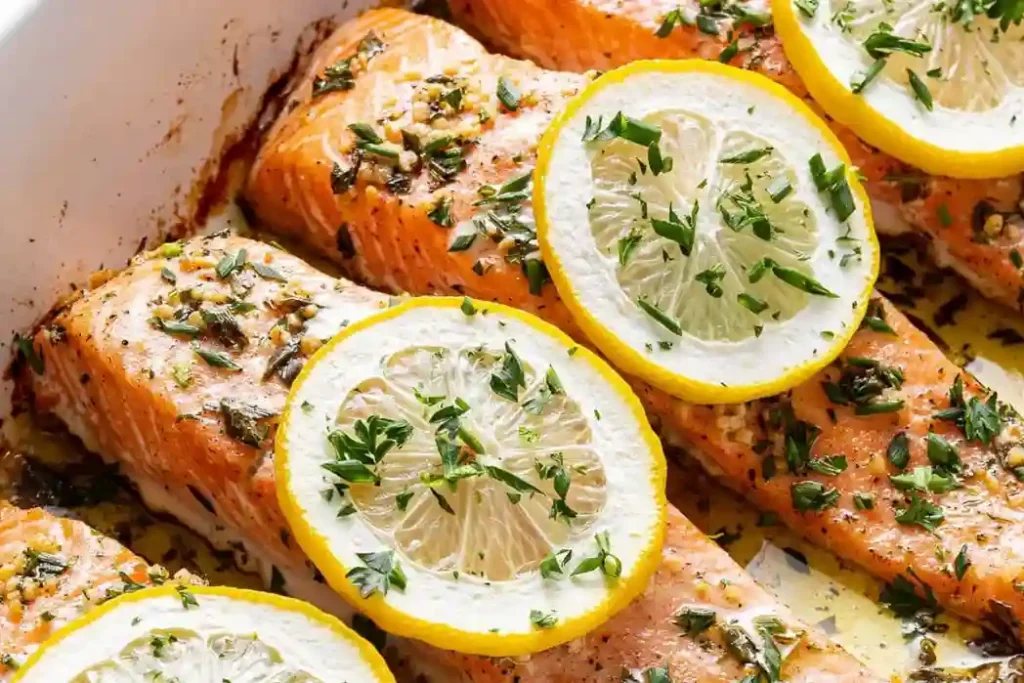
- Ultimate Peach Crumble Recipe: Sweet & Crunchy Delight
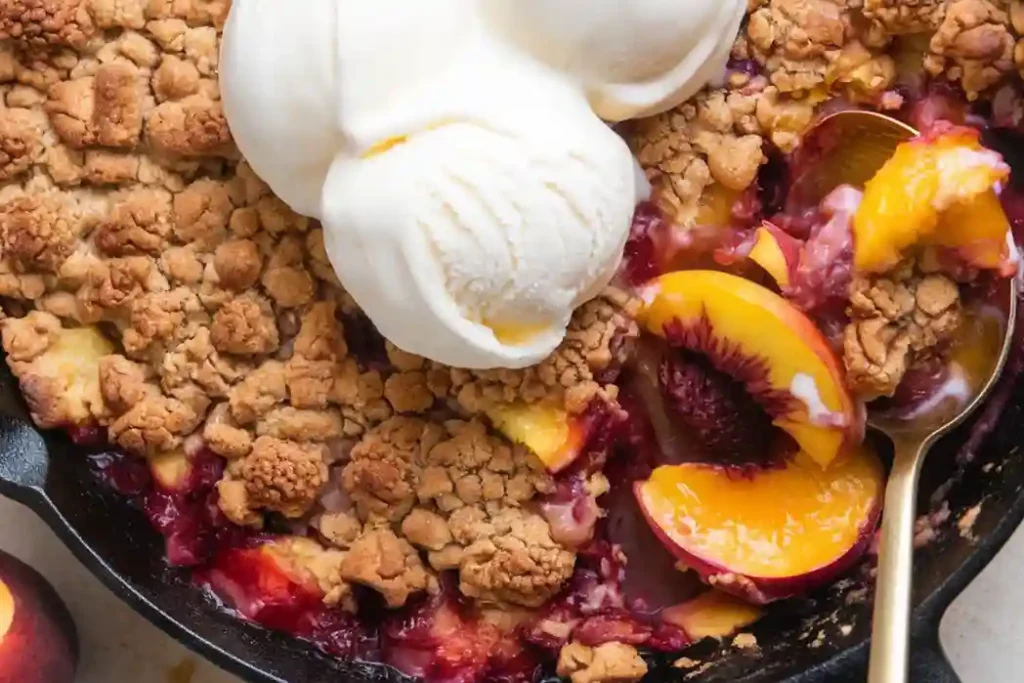
- Easy Step-by-Step Brioche Loaf Recipe for Perfect Breakfast Bread
